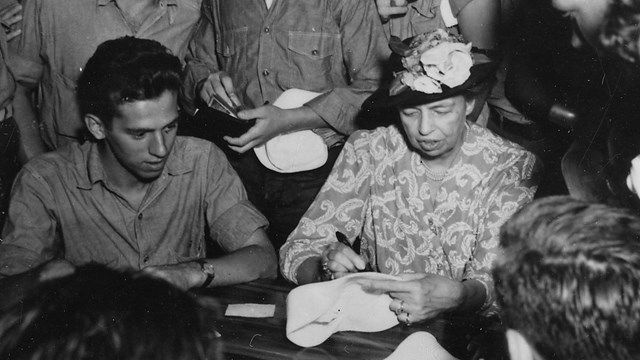
Library of Congress A Progressive UpbringingIda McKinley, the fifth of the seven Ohio first ladies, was born in Canton, Ohio, on June 8, 1847, to James and Kate Saxton. The Saxtons raised Ida in the Saxton-McKinley House with her two younger siblings, Mary and George. Ida grew up in a wealthy, progressive family and was exposed to abolition and the women’s rights movement. Additionally, Ida was encouraged by her father to pursue higher education, a rare occurrence for women at the time. Ida’s level of education would amount to a Master of Fine Arts degree today, and she excelled in advanced mathematics, literature, music, and foreign languages. 
Library of Congress Family Tragedy and Political LifeIda and William McKinley rented a house from Ida’s father that was down the street from the Saxton House, Ida’s childhood home. The McKinleys had two daughters, Kate and little Ida, born in 1871 and 1873. Unfortunately, little Ida passed away only four months after her birth from an unknown illness; Kate passed away shortly before her fifth birthday, most likely from a childhood fever or a heart condition. These deaths, coupled with the passing of Ida’s mother and grandfather, a difficult pregnancy with little Ida, and a prior back and neck injury, took a toll on Ida’s health. She started to suffer from migraines and what is thought to have been petit mal epilepsy. These conditions would negatively impact her mobility throughout her life and limit her public involvement in William’s political career. Ida lived with William in Washington, D.C., during his tenure as Representative and later in Columbus, Ohio, during his term as Governor; though, whenever the couple was in Canton, they lived in the Saxton House with Ida’s sister Mary and her family. William and Ida chose to no longer lived in their newlywed home, as the home held too many memories of their passed daughter. They ended the lease after little Ida’s death. 
Library of Congress McKinleys in the White HouseIn 1895-1896, William conducted a successful presidential campaign, using his and Ida’s former newlywed house as the site of his front porch campaign; though, he and Ida still lived primarily at the Saxton House. The Campaign House served as a public facade, rather than a genuine residence. 
Library of Congress Life After WilliamIda returned to Canton with William’s body, but, for unknown reasons, chose not to attend his funeral. In the years following William’s death, Ida retired to the former Campaign House and made daily visits to the vault in West Lawn Cemetery where his body was held. She also supervised the construction of the Canton memorial for her husband. After two years of deep mourning, Ida continued her usual activities; she visited her sister’s family frequently and went to shows at Canton theatres, having been a lifelong patron of the theatre. 
Tour the Saxton House
The formal parlor where the Saxtons and McKinleys would greet guest. 
First Ladies of the United States
At least 57 women have held the role of First Lady, learn more about who they are. 
Who is a First Lady?
Explore how the position of First Lady has been defined and developed over time. |
Last updated: September 25, 2024
